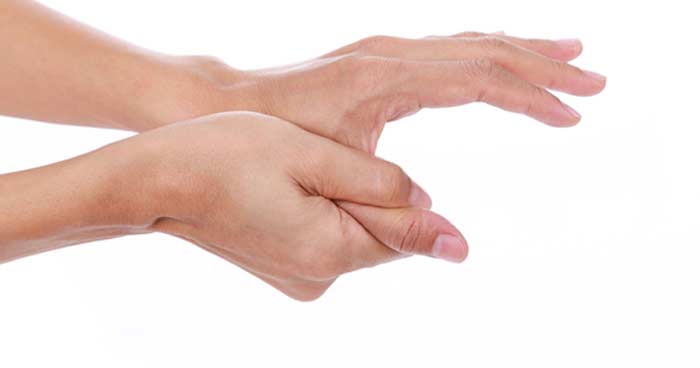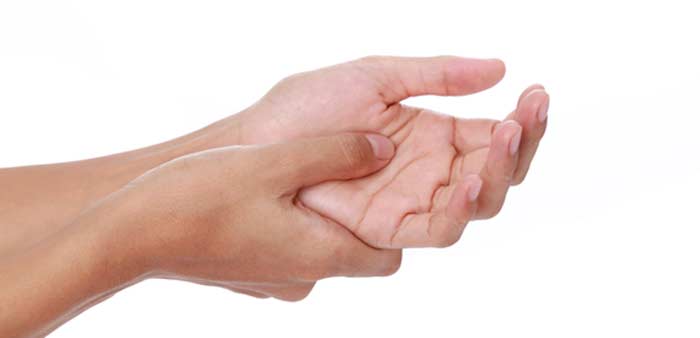
Trigger finger is also referred to as stenosing tenosynovitis.
Trigger finger is a painful condition that can lead to the finger becoming stuck in either a bent or a straight position.
You may be able to move the affected finger with the other hand, but it is common to lose a substantial amount of your normal range of motion with this condition. The good news is that there are a variety of effective treatments for this condition.
Causes
Trigger finger develops when the band of tissues responsible for holding the tendon close to the finger bone becomes inflamed. When this happens, the tendon cannot slide freely, which causes the finger to catch or even become stuck in position.
Symptoms
Trigger finger causes pain and stiffness in the finger, as well as a locking or catching sensation. While the condition can affect any finger, it is most common in the ring finger and thumb. When it occurs in the thumb, it is called trigger thumb. Additional symptoms of this condition include a painful bump at the base of the finger on the palm of the hand. Symptoms may be worse in the morning or after other periods of inactivity.


Risk Factors
Trigger finger is more likely to develop in people with certain medical conditions, such as rheumatoid arthritis or diabetes. It can also develop after something that causes a forceful motion in the fingers or thumb. The group with the highest risk of developing trigger finger are females, between the ages of 40 and 60. Musicians, farmers, industrial workers and others whose work causes repetitive motion are also at an increased risk of developing the condition.
Treatments
There are a variety of treatments for trigger finger. Initially, your physician will probably recommend rest. In some cases, avoiding activities that worsen the condition may be enough to allow the trigger finger to resolve. If symptoms don’t improve, there are several options available. You may be asked to wear a sleeping brace that holds the affected finger straight overnight. Your doctor may prescribe some gentle stretching exercises that ease stiffness and help restore your range of motion. Over the counter medications can help reduce inflammation and ease symptoms.
If none of these treatments help ease your symptoms, your doctor may prescribe steroid injections into the tendon sheath. If a series of injections do not ease the pain, your doctor may recommend surgery.
The surgical treatment of trigger finger is an outpatient procedure where the tendon band responsible for allowing the tendon to glide along the finger is opened up, giving the tendon room to glide freely. There are generally no issues with opening up this tendon band.
Complications
Like any surgery, there is the potential for complications. Expect temporary soreness and swelling after the procedure. This should clear up in relatively short order. Longer term complications include unresolved loss of range of motion, persistent stiffness in the area, numbness or tingling in the area, and, relatively uncommon, bowstringing of the tendon. Bowstringing is when the tendon bows away from the bone, reducing the range of motion.
Recovery and Outlook
Your doctor will probably want you to move your finger soon after surgery. It is normal to have some soreness and pain in the palm, which should get better over time. It may be up to six months before the stiffness in your hand and finger are completely resolved. Surgery typically provides a substantial improvement in pain and loss of movement in the affected finger. It is possible that you may not have a full range of motion restored following surgery.
Trigger finger can cause pain and inhibit activities of daily living. There are very effective treatments for this condition. Effective treatment can often occur without surgical intervention.
